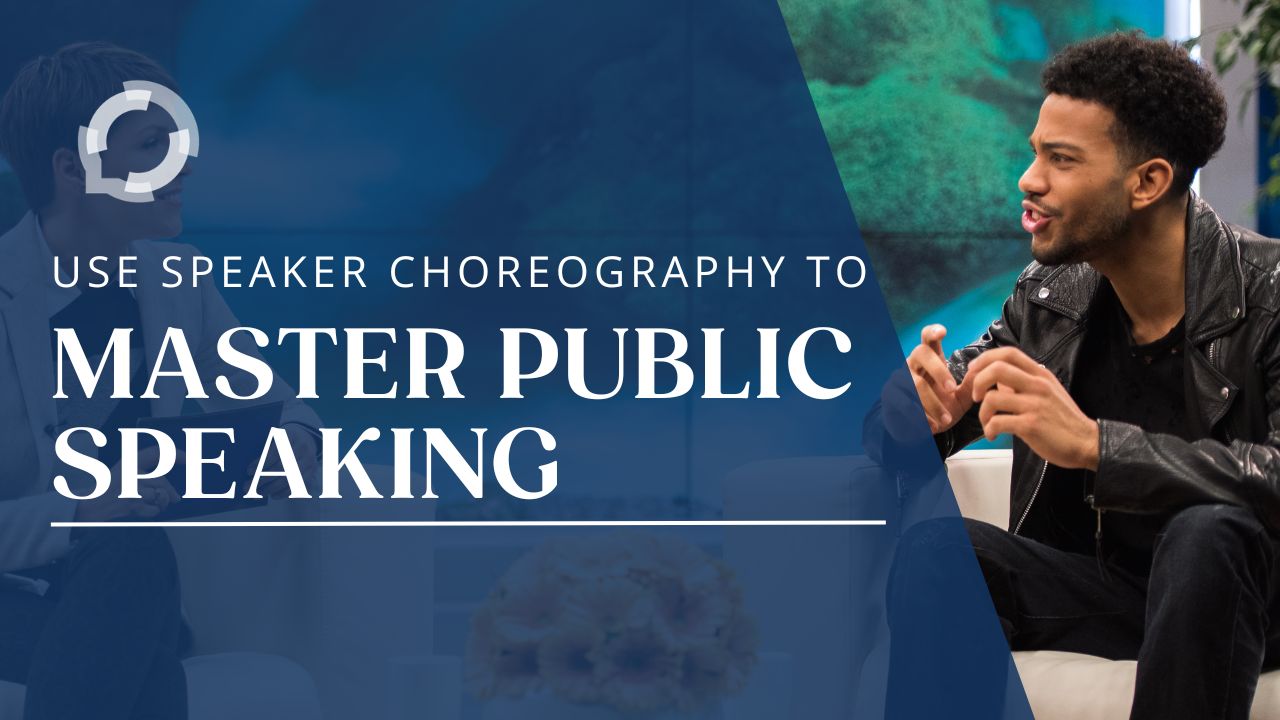Let’s talk about speaker choreography.
Recently, I had a charming conversation with my mentor and coach, Natalie Bullen, that made me revisit how I explain speaker choreography.
Natalie asked why my website, marketing, and social profiles were only 25% of what I actually am, who I am, and what I do. She emphasized that my coaching is informed by my entire history, so leaving out the context of WHY I’m doing what I do needs to make more sense.
I thought about it and realized she was right.
I’m a strong cup of coffee (my first reaction was, “I shouldn’t share the full me – I’m not for everybody”), and much of what I do is informed by my history in Middle Eastern Dance.
All of my background ties into my work. I started in occupational therapy, learning task analysis, neuroanatomy, and how brain chemistry, structures, and everything else impacts performance. So that affects my work. I was in instructional design, creating courses, structuring content, and being able to put things in a way that makes sense to different audiences. That informs my work. I have an art background, which impacts the visuals I use in my presentations or speeches.
But the most significant aspect is my background in dance.
Wait? Middle Eastern Dance? Do you mean Bellydance?
For 25 years, I was a member of Desert Moon Dancers of Connecticut, a Near and Middle Eastern Dance Troupe. Most of us are retired now, but we’re all still in that world. We have a nuclear engineer, a couple of instructional designers, a banker… yeah, it’s a mixed crew. And everybody was taught by Nancy (an epidemiologist), who herself was trained by some of the best dancers in the field. And we’ve also had the privilege of working with people who are famous in the art form.
American Middle Eastern Dance runs the gamut. On one end of the spectrum are the people fulfilling their inner goddess. The other end are scientists doing sociology and looking at the mechanics of movement and how culture informs it. Our group was more on the science side, but we’re friends with everybody. It’s a big, big, messy family, and it needs to be more easily understood. I’d have people say, “Oh, you’re an exotic dancer.” No, dear that’s stripping. It’s perfectly valid, but that’s not what I’m doing.
I was not upfront that my work is strongly influenced by Middle Eastern Dance because it got really frustrating explaining to people that my specialty was Egyptian folk and theatrical dance. I trained on it for decades. But because the picture is a happy birthday on your stomach and a really skinny girl, (which is also totally accurate), it became something I hesitated to mention.
I’m following Natalie’s advice and in her footsteps and being entirely upfront. Because what I used to do matters in my work.
My work right now is on presenting and speaking, and it’s on moving people to the next stage to achieve their goals, getting to wherever they need to be. And because of that, I’m using my entire history, not only restructuring speeches or how you perform.
It includes the physical space of your performance, what I call speaker choreography. How are you standing? What are you expressing? What are you doing with your hands? Are you actually doing something that is going to bring people in?
It’s not just a verbal or written performance but also a physical one. Because of that, I do choreography with some of my speaking clients. Some I help restructure their work, and some we talk about how to better engage the audience or how to use Zoom your best way.
Speaker Choreography in my TEDx
I did speaker choreography for my TEDx. I practiced the gestures and how I would physically represent my speech. I drilled it for about two months. And then went up there and winged it in the moment. However, I had the foundation of what gestures I wanted to use to enhance the meaning of my words.
Because being fully yourself is really, really important when you are the product. And until that talk with Natalie, I was kidding myself; I was doing 25% of Kirsten, not 100%.
She was right. I was hiding.
I wasn’t bringing in the art; I wasn’t bringing in the dance. I needed to bring in occupational therapy, instructional design, or technical training. All of that is part of my work. And it all adds to what I do. It’s essential to be ultimately yourself when you’re the product. And I didn’t think I was hiding, but I really was.
So this is me telling you. Hi. I’m Kirsten. I was a Middle Eastern dancer for 25 years and created illuminated manuscripts in the SCA. I’ve been a technical trainer and worked in rehab departments and school systems doing occupational therapy. I’ve taught in 12 different countries. I have a broad history, and all of it relates to how I help people who have to speak or professional speakers achieve their goals.
It’s the same for you. If you’ve been keeping any part of yourself hidden, consider this your call to be fully 100% you. – Kirsten
Check out my TEDx
“The Art of Communicating Effectively for Hybrid and Online Work.”
Check Out Our YouTube Channel
The Rourke Training – Ongoing Mastery YouTube channel has a bit of something for everyone. Go there to get Kirsten’s take on examples of public speaking, as well as reflections on her entrepreneurial journey. The channel is also the home of the podcast Kirsten and Kellie produced for 5 years, Ongoing Mastery: Presenting & Speaking, which covers everything connected to continually improving your craft of being a public speaker, from interviews and mini-coaching sessions with guests to conversations between Kirsten and Kellie.
Come join us.


